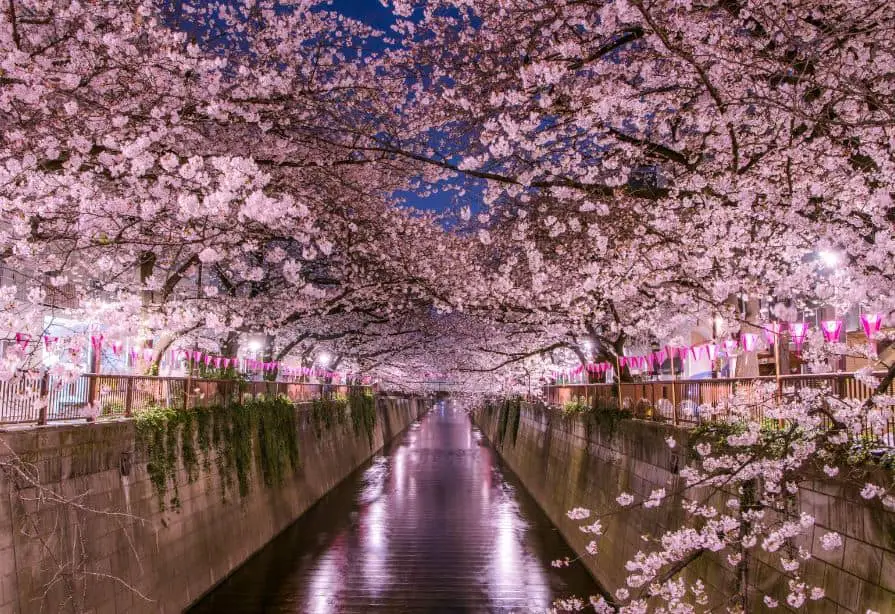Most individuals, at least, sometimes like looking at flowers. The first bright blossoms of spring provide a wonderful chance to see the end of winter. In Japan, seeing flowers is a significant yearly event that is celebrated with customary ceremonies and celebrations. This season, known as hanami, is when cherry trees bloom.

What is Hanami?
Hanami, which means “flower” and “to look,” or simply “flower viewing” in Japanese. It has been a yearly custom for more than a millennium. Hanami is the Japanese season when people celebrate the lovely but fleeting cherry tree flowers.
Hanami’s long history dates to the Nara era, which lasted from around A.D. 710 to 794. People back then enjoyed the spring flowering of an “ume” tree. The celebration lasted a while because these flowers lasted over two months.
There are various implications to the contemporary custom of viewing cherry blossoms. It begins at the same time as the start of the new fiscal year and the new academic year for kids. It acts as a new year’s celebration and a new beginning.
The celebration also has a deeper, more philosophical purpose. Cherry blooms come and go quickly. Each flower loses its petals nearly immediately after it blooms. They remind viewers to enjoy life to the fullest while they still have the chance.
When is the Hanami Season?
Cherry trees only blossom briefly, between seven and 10 days. Depending on the region, the bloom happens sooner in the south and later in the north. It typically takes place from March through April.
The Sakura (cherry tree) forecasting that occurs in Japan at the start of the year seeks to assist people in determining when the blossoms will emerge and when to schedule a hanami celebration. The reports contain practical maps, the best locations to see the flowers, and an estimate of how long each region will bloom.
The Hanami Cherry Viewing Traditions
Hanami is a long-standing custom that is being observed today. The most typical celebration approach is to picnic in a nearby park among the cherry trees. The parks are often overcrowded. Although the genuine celebrations start later in the day and go into the evening, it is not uncommon to see someone laying down a tarp and claiming a place as early as the morning.
The festivities include picnics attended by family, friends, and often colleagues. Many businesses dispatch young workers to set up early for an evening work picnic. Food and beverages, including saki, are often packed. It is not unusual to celebrate by binge drinking. Lanterns are lit at night, and the gatherings can extend for hours.
What is a Hanami Festival?
Although hanami picnics originated in Japan, they are now common worldwide. Some people commemorate the season with picnics in Washington, D.C., where cherry trees provided by the Japanese government border the mall and other sites.
Have a picnic with family and friends if you have cherry trees in your neighborhood or nearby parks and want to celebrate in an old-fashioned way. In contrast to Japan, where parks rapidly fill up, you should not need to make a reservation in the morning.
Bring a blanket, snacks, and beverages, and take in the ephemeral, transient beauty of the blossoms. It is a terrific opportunity to unwind and enjoy the company or to become philosophical and consider life’s fleeting nature and fresh beginnings.

